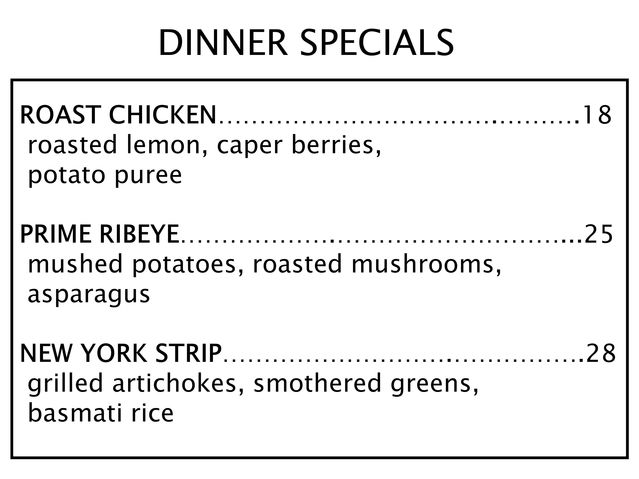Persuasion
How a Product’s Distinctiveness Entices Consumers to Buy
Sellers can influence which item customers choose and how much they pay.
Posted April 16, 2018
“I must be myself…I will not hide my tastes or aversions. I will so trust that what is deep is holy, that I will do strongly before the sun and moon whatever in[ward]ly rejoices me, and the heart appoints.” – Ralph Waldo Emerson, Self-Reliance
Consider this interesting conundrum faced by a restaurant owner with her menu. This restaurant is an established neighborhood brasserie located in an urban area and targets neighborhood diners. It has been in business for over a decade and has a regular, loyal clientele. Despite these positives, the owner has a problem.
A majority of its patrons order from the restaurant's nightly specials menu. On it, the chef has listed a roast chicken entrée priced at $18 and a ribeye steak for $25. Even with its significantly lower price, the restaurant makes far more profit from selling each plate of roast chicken than it does from selling the ribeye steak. That's because ingredient-wise, chicken costs much less than a good quality ribeye. In fact, when customers order a ribeye steak, the restaurant barely breaks even.
Unfortunately, night after night, patrons overwhelmingly prefer the ribeye steak. It is by far the most popular item ordered from the nightly specials menu. Even worse, hardly anyone orders the profitable roast chicken entrée. The owner wants to sell fewer ribeye steaks and more roast chickens.
How would you help the restaurant owner to solve this problem?
I am sure there are many solutions. For example, the owner could increase the ribeye steak’s price, or lower the roast chicken’s price. However, the answer I want to write about in this blog post concerns an interesting psychological phenomenon discovered by behavioral economists. It is called the ‘substitution effect or ‘similarity hypothesis.’ First, let me explain what the owner should do based on the similarity hypothesis, and then we will look at why it will work.
To get more people to order the roast chicken, the owner should add a second steak entrée to the nightly special menu, say a New York Strip steak for $28. At the first glance, this sounds implausible. Why on earth would the restaurant want to add another new item to its menu that is similar to the unprofitable steak dish, and which is also likely to make little money? After all, New York strip is just as expensive an ingredient as the ribeye.
According to the similarity hypothesis, however, putting two steak entrees on the menu alongside a single chicken entrée will skew the customers’ preference towards chicken. The chicken will be the option which appears unique and dissimilar to the other two. The owner could even put all three nightly specials next to each other in a box on the menu to highlight the chicken’s distinctiveness. It could look something like this.

The psychology behind this effect is a basic phenomenon that applies to every one of us. We are attracted to distinctive things. Whether we buy them, own them, or order them in restaurants, we want to be associated with unique things to validate our uniqueness as individuals. We desire to feel special and different from others. Psychologists Howard Fromkin and C. R. Synder pointed out this common inclination back in 1960, suggesting that our desire for uniqueness is a “prevalent determinant of behavior.” In fact, much of marketing activity revolves around satisfying consumers’ need for uniqueness, and the restaurant owner should make use of this fact.

There are countless examples of how the need for uniqueness influences our behavior. I’ll give just one example here. Say you go to a restaurant in a group. Research has shown that if other people in the group order your preferred food item before you, you will be less likely to order it even if it is something you order every time. Instead, you'll be likely to order something different, even if you don’t like the other item as much. In other words, you are likely to prefer variety for the sake of being distinct from others in your group.
The restaurant owner's conundrum and the solution to it based on the similarity hypothesis provide an example of how our basic motives can influence our behavior in ways that defy common sense. In our quest to be different, we behave in predictable ways.


